The European Union needs to show leadership on climate and the bloc’s future competitiveness by ensuring all new freight trucks are zero-emission by 2035, a broad business alliance of 44 companies says (1). In a message In a memorandum to the EU Commission, signed by globally recognised brands including Siemens, Maersk, Unilever and PepsiCo, the coalition wrote that a 2035 deadline is not only feasible but necessary to fully replace the fossil-fuelled truck fleet in time for the EU to reach climate neutrality by 2050.
The companies write that a 2035 zero-emissions target for new freight trucks would provide investment certainty for vehicle manufacturers to increase their electric and green hydrogen offerings. Major truck manufacturers have already announced that half of their sales will be zero-emission by 2030 (2) but binding rules are needed to ensure that investments and supply increase on time. Some specialist vehicle categories, such as construction trucks, could be given until 2040 to comply, the alliance says. The EU Commission will publish its proposal on CO2 targets for new trucks in the coming months.
Michelle Gross, Vice President, Global Logistics and Execution at Unilever, said: “Decarbonising our logistics is critical to reaching our goal of net zero emissions by 2039. As a freight owner, we have made some significant progress in reducing our emissions through critical efficiencies and reducing the number of trucks we have on the road, but as an industry we can do more. Together with our EV100+ partners, we are sending a strong signal to the European Commission and the wider industry to put all new freight trucks on a zero-emissions pathway from 2035 onwards. The solutions to decarbonise already exist – but we need to increase the supply of clean trucks.”
But higher CO2 reduction targets for truck makers of -30% in 2027 and -65% in 2030 will also be necessary to ensure a greater supply of cleaner trucks in the second half of this decade, the companies write. They say the European Commission should resist calls to include fuel credits in truck CO2 targets because they would not help solve the problem of emissions from heavy vehicles and would mix different types of regulations, undermining their effectiveness.
Torben Carlsen, CEO of DFDS, the leading European transport and logistics company, said: “Decarbonising heavy transport by 2035 is realistic but requires ambitious decisions and significant investment. With the first 125 DFDS electric trucks in operation and the remaining trucks arriving in 2023, we are seeing our investments turn into action. However, challenges will remain without rapid deployment of charging and refuelling infrastructure. To succeed in this transition, we need an ambitious target for zero-emission trucks by 2035 and sufficient capacity for the electric grid in due course.”
The companies are also calling on EU lawmakers to finalize ambitious charging and refueling infrastructure targets – under the Alternative Fuels Infrastructure Regulation – as soon as possible. They say a review of the law in 2024 would ensure that the targets are in line with the expected market uptake of electric and hydrogen trucks. Targeted financial support for early adopters and small and medium-sized companies will also be needed to meet the higher purchase costs of zero-emission trucks to date.
Sandra Rowling, Director of Transport at The Climate Group, An international non-profit organization that launched the EV100 and EV100+ initiatives, He said: “We support the European Commission’s leadership in the transition away from fossil fuel-powered trucks to clean, zero-emission alternatives that will not only ensure alignment with European and international climate targets but also support Europe’s future industrial competitiveness. EV100+ members are leading the way by committing to convert their international fleets from heavier internal combustion vehicles to zero-emission vehicles by 2040. A clear target to phase out sales of multi-purpose internal combustion vehicles by 2035 will accelerate market development by providing investment certainty for all stakeholders.”
Trucks represent only 2% of vehicles on the road but are responsible for more than a quarter of CO2 emissions from road transport in the EU (3). Road transport and heavy vehicles are also the largest sources of fine particulate matter and nitrogen oxides pollution, which cause an estimated 350,000 premature deaths in the EU each year (4).
Notes to editors:
(1) The broad alliance includes truck manufacturers, transport operators, freight forwarders, retailers, energy providers, infrastructure operators, industry stakeholder alliances, and companies across the electric mobility and green hydrogen value chain. The 44 companies are:
APL Logistics, Arrival (UK), Avere, Avitron (Poland), Cargotec (Finland), CEE GTI – Green Transport Initiative for Central and Eastern Europe, Calstart/Drive to Zero, Contargo (Germany), CNL – Sustainable Logistics Council (Austria), Currys, DFDS, Elocity (Poland), Ekoen (Poland), Ekoenergetyka (Poland), Emobility Work Hub (Poland), Climate Group EV100+, Colruyt Group, Fastned, Fundacja Promocji Pojazdów Elektrycznych (Poland), LKW Walter (Austria), Lime, Maersk (Denmark), Milence (formerly CVC Europe), Nippon Express, Novo Nordisk (DN), Oatly (SE), Orsted (DN), PIRE – Polish Electromobility Development Chamber (Poland), Electromobility Platform, PepsiCo, PSPA – Polskie Stowarzyszenie Paliw Alternatywnych (Poland), Royal Mail (UK), Siemens (Germany), SEVA – Slovak Electric Vehicle Association (SL), Schachinger Logistik (Austria), Smart Freight Center, Swiss Post (Switzerland), Stacjeladowania (Poland), Tevva, Unilever, Van der Wal (Netherlands), Vattenfall (Sweden), Volta Trucks (Sweden), WattEV (USA).
(2) Transport and Environment (2021). Easy Journey: Why EU Truck CO2 Emissions Targets Are Not Fit for the 2020s. connection.
(3) United Nations Framework Convention on Climate Change (2019). Greenhouse gas data from the United Nations Framework Convention on Climate Change. connection.
(4) European Environment Agency (2021). Sources and emissions of air pollutants in Europe. connection. Health effects of air pollution in Europe. connection.





